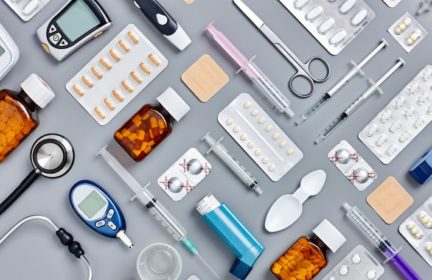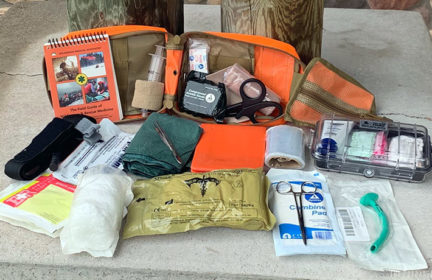Including Naloxone in EDC or IFAK
Naloxone is new to me but has been featured in several TV news clips in my area over the past month. Basically, its a drug that by-standers can administer to somebody overdosing on opioids which will potentially save the person’s life.
https://www.cdc.gov/stopoverdose/naloxone/index.html
Wondering if others living and working in busy urban areas keep this on hand as part of their EDC preps.
-
Best Replies
TraceContributor Trace - April 4, 2022
I debated getting involved in this discussion, because for me it’s also a hard “NO”. As a former paramedic and, years ago, a police officer, I came across many drug overdoses — both prescription and illegal cases.
Using Naloxone/Narcane is a treatment protocol that potentially involves a lot of responsibly on the “provider’s” part. If you give Naloxone you can’t just give it and leave. As mentioned, this is not a cure all or get out of jail free card — it only buys time and EMS, and at times LEO, must be involved. Naloxone only lasts for a finite period of time and the opioids present in their system may last longer. So if you give it to them they’ll wake up, but may crash again after the Naloxone wears off putting them back in the exact same shape they were when you arrived.
After you give it the “patient” will wake up, most of the time very quickly, and very rarely happily. They will be frequently anxious, always confused, and rarely appreciative of your actions. You need to explain to said person who you are, why you are there, and what you did. Generally they will not appreciate/understand you being there, or even be aware that they were unconscious and/or dying — they will not look on you as their savior. In addition to being confused they may vomit, have diarrhea, extreme agitation, and occasionally will even be violent.
Picture “helping” a homeless person, then trying to explain what you did and trying to keep them there until EMS/LEO arrives — this is rarely going to go well.
Before you go down this potential rabbit hole of training, carrying extra equipment, and exposure — ensure your CPR/1st aid training is up to date, take a wilderness 1st aid class, and/or other 1st responder training opportunities.
-
Comments (15)
-
sewknot - April 2, 2022
This is something that is now being issued in Scotland to try and reduce drug deaths, it is being issued to Police and members of the public can receive free training in its administration and be issued with a kit.
There is a big push atm to re-frame language and attitudes around this issue.This is not something I personally carry or intend to carry in my current circumstances BUT if I had a family member or close friend who used opioids for any reason, legitimate or otherwise, then I would consider carrying it.
-
Bradical - April 2, 2022
For sure I would carry it around in my EDC if I had a family member who struggled with substance abuse. But I would have to look into good Samaritan laws, receive training, know how to diagnose an overdose, and be ready for a potential lawsuit if I saved a stranger and they had a negative reaction. Even if you save someone’s life, they can still get upset at you.
-
-
Bill Masen - April 2, 2022
Not something I would even remotely consider, My family has suffered badly at the hands of drug users and addicts, including my mother and severely handicapped brother being robbed at knifepoint by a druggie, out on bail for robbing another old lady the day before.
-
Bradical - April 2, 2022
Really sad how drugs make people desperate and not in their right mind to do cruel things like that.
-
Bill Masen - April 2, 2022
My mum was 89 at the time, she was still going out shopping, meeting friends, having walks, going on coach trips etc. After being robbed and pushed to the floor she never left the house again. She died within the year.
-
Gideon ParkerStaff - April 2, 2022
That sure is heartbreaking to hear Bill, sorry she had to go through that.
-
pnwsarahContributor - April 2, 2022
That is truly awful, Bill. Especially the effect on your mom’s quality of life. I’m so sorry that she and your whole family went through that.
-
JennyWren - April 3, 2022
I have to agree with you Bill. This is not something that I would consider. Having had a quick look at how this stuff works, it does not reverse completely the effects of an opioid overdose, it simply buys 30-60 minutes to give a small window for professional help to arrive and if I’m honest, I wouldn’t want to be hanging around for that time waiting for an ambulance to arrive. The side effects can be severe, from causing a withdrawal crash- to heart attack and to try and keep a raging addict in situ or have to give CPR is not something I want to consider.
Count me out on this one, I’m afraid.
-
Seasons4 - April 5, 2022
Bill, I’m really sorry about what happened to your mother and brother. My Mom is the same age now as your Mom was then, so it hit home. (I’m just now catching up reading this thread or I would have responded earlier.)
-
Shaun - April 5, 2022
Bill,
It’s painful to read this. I feel badly for your mother.
I saw a lot of violence at one point in my life and I came to realize that some people recover psychologically or emotionally better than others and it’s not a male/female or young/old thing. Sometimes violence or witnessing violence can leave a psychological scar on someone that is hard for others to understand.
As we become older and elderly we become a specific target of junkies and thieves that are both looking for high value pharmaceuticals. Many thieves case the homes and apartments of older people because we are much more likely to have prescriptions for high street value medications. This increases our risk of violence because if a junkie enters your home they are much more likely to be violent.
Be aware and prepare.
-
-
pnwsarahContributor - April 2, 2022
Really good question! If I thought there was a decent chance that me carrying Naloxone would save anyone’s life, I would do it (pending some research and ideally training on how to protect myself legally and physically and decide whether or not to deploy it). The thing is, while I see people under the influence of drugs every day, and that’s been true around most of the places I’ve worked (in three different West Coast cities), I’ve never seen someone overdosing… at least not to my knowledge. I know that there are some blocks in SF where open drug use is very much a thing, and maybe people there are also overdosing in plain view of commuters, so maybe if that’s your neighborhood, yes, carry the stuff?
I’m very interested in what other people think about this. Sometime in the last year, my employer floated the possibility of making Naloxone (as well as training in how to administer it) available to interested employees (for the purpose of bystander intervention, i.e.) and it really made me think about how likely it is that I would ever be able to help anyone with it if I carried it…
-
TraceContributor - April 4, 2022
I debated getting involved in this discussion, because for me it’s also a hard “NO”. As a former paramedic and, years ago, a police officer, I came across many drug overdoses — both prescription and illegal cases.
Using Naloxone/Narcane is a treatment protocol that potentially involves a lot of responsibly on the “provider’s” part. If you give Naloxone you can’t just give it and leave. As mentioned, this is not a cure all or get out of jail free card — it only buys time and EMS, and at times LEO, must be involved. Naloxone only lasts for a finite period of time and the opioids present in their system may last longer. So if you give it to them they’ll wake up, but may crash again after the Naloxone wears off putting them back in the exact same shape they were when you arrived.
After you give it the “patient” will wake up, most of the time very quickly, and very rarely happily. They will be frequently anxious, always confused, and rarely appreciative of your actions. You need to explain to said person who you are, why you are there, and what you did. Generally they will not appreciate/understand you being there, or even be aware that they were unconscious and/or dying — they will not look on you as their savior. In addition to being confused they may vomit, have diarrhea, extreme agitation, and occasionally will even be violent.
Picture “helping” a homeless person, then trying to explain what you did and trying to keep them there until EMS/LEO arrives — this is rarely going to go well.
Before you go down this potential rabbit hole of training, carrying extra equipment, and exposure — ensure your CPR/1st aid training is up to date, take a wilderness 1st aid class, and/or other 1st responder training opportunities.
-
pnwsarahContributor - April 4, 2022
Thank you, Trace, this is incredibly helpful info, and confirmed my sense that my employer either didn’t think the “give everyone Naloxone” proposition through at all, or just wanted to be seen proposing it. (Maybe both?) This kind of stuff has been really divisive in my current workplace, so I suspect that my employer is trying to manage the employees more than they are trying to manage the people at risk of overdosing outside our building.
-
-
Colorado Jones - April 4, 2022
Thanks to all who have contributed so far! Very informative and lots to think about. Not surprisingly, the decision to carry or not to carry is much more nuanced than portrayed on the brief “miracle drug” TV news pieces that I’ve seen. At this point, I’ll reach out to the security team at my work for further guidance about policies and protocols around Naloxone. Outside of work, of course, is a different story and, as others have suggested, I likely don’t want to get involved in such situations.
-
Colorado Jones - April 5, 2022
FYI, here are a couple of PR videos that explain how Narcan works:
At one level they’re informative, but they don’t really address any of the concerns raised so far on this thread.
-
- News for the week of 2025-07-07 - 18 hours ago
- Fun ways to teach kids outdoor/survival skills - 7 days ago
- News for the week of 2025-06-30 - 1 week ago
- News for the week of 2025-06-23 - 2 weeks ago
- News for the week of 2025-06-16 - 2 weeks ago
This forum is heavily moderated to keep things valuable to as many people as possible. Full community policies are here. The basics:
- 1. Be nice to each other.
- 2. Stay focused on prepping.
- 3. Avoid politics, religion, and other arguments.
- 4. No unfounded conspiracies, fake news, etc.
- 5. Debate ideas, not people.

